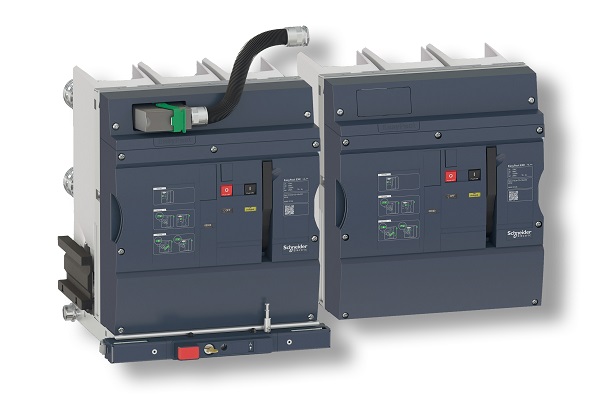Circuit breakers are undoubtedly among the unsung heroes of the electrical world. This is the view of Casper Du Plessis, Power Systems Operational Manager: Services at Schneider Electric. Circuit breakers perform the fundamentally important task of protecting electrical circuits from damage caused by overcurrent/overload or short circuit. The circuit breaker interrupts current flow as soon as the protective relays detect a fault.

Diagnostics play a valuable role in monitoring circuit breakers and informing timely maintenance.
This alone makes a solid case for ensuring circuit breakers are maintained – and – for diagnostics. However, to place it in an everyday context, we need to take a step back and look at some of the consequences of faulty breakers.
Foremost, when circuit breakers in a plant or factory start to malfunction, this can lead to various problems, primarily downtime. Moreover, if spare parts are not available, the situation can become more problematic. Replacing a breaker, especially an older one, is a time-consuming task that involves changing several connections, resulting in a stretch of downtime.
The downtime does not only affect the faulty breaker; it can have a cascading effect on other systems, causing additional failures and disruptions. At any time, and particularly in the current context of unstable energy supply, extended downtime should be avoided as far as possible.
There are a number of expert service providers that offer well-recognised auditing experience and diagnostics tools which ensure crucial components like circuit breakers are managed and maintained.
Diagnostics is emerging as a critical success factor in improving electrical room safety, durability, and performance. The implementation of effective diagnostics in electrical equipment requires a high level of experience and expertise, sophisticated software tools, and broad access to field performance data of the equipment.
What to look for in diagnostics tools
Breaker diagnostics tools assess the speed of particular breakers over time, and whether they have slowed down, highlighting which ones need to be repaired or replaced outright.
The diagnostics tools also provide detailed information and recommendations that will allow an organisation to plan for the future. They can determine how long a breaker can still be used and offer scenarios that outline what parts will still be available in the next ten years.
Diagnostics can generate reports that include data from visual inspections as well as technical data from various tests conducted on a breaker to assess its condition.
Schneider Electric’s ProDiag diagnostic tools offer a combination of dedicated sensors and internal software that allow services personnel to analyse trip units, relays, breakers, fuses, and other electrical components.
The ProDiag tools identify the symptoms of undetected incidents or degradation of equipment and they offer additional benefits:
- Detecting the early stages of breaker degradation which might not be detected during regular preventive maintenance
- Assisting with protection of downstream electrical distribution equipment and the people operating them
- Enhancing reliability, mitigating unexpected shutdown risks and related operating costs
- Extending equipment lifespan to optimise total cost of ownership.
For more information visit: www.se.com






